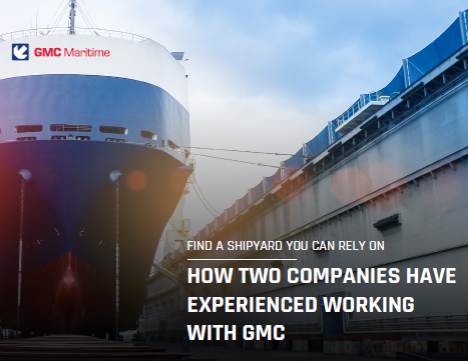
With professional planning, preparation and execution, dry docking can become a predictable and efficient process for the shipowner. Which factors should be considered in any case, before selecting the right shipyard?
Every vessel is required to dry dock at least once every 5 years. Following the standards of classing you will need docking regularly and now and then your vessels are in need of:
- repair
- modernization and conversion
- sandblasting and painting
The expenses and time can escalate: Your biggest concern is off chart time and general costs. How can you minimize your expenditure?
In this article, I share some of my learnings and recommendations from 20+ years within project and technical management.
For more in depth knowledge download the checklist on success criterias for dry-docking.
There are some cruicial factors you should consider, before you make your decision. First of all - location:
Location
Every ship owner should take the total cost of docking operation into account, including the time factor.
Along the west coast of Norway, close to the extensive offshore activities in the North Sea, quite a few shipyards are offering their services to the large fleet of offshore-related and commercial vessels.
The majority of the shipyards are located along the north-western part of the Norwegian coastline, around the city of Aalesund. A handful is situated further south, between Bergen, Stavanger and Kristiansand.
There are even a couple of shipyards in Oslofjorden by Oslo, Drammen and Porsgrunn.
You don´t want to put your ships on a long detour getting to and from the shipyard. Let geography be an essential argument when choosing shipyard.
Geography also includes an element of meterology, in particular during the harsh winter season in Norwegian waters.
You might like: How fast can you perform a docking and classing operation?
Pricing
When comparing shipyards across Europe, of course - the price will be a crucial factor.
The Norwegian offshore-industry has been going through a crisis the past years, and we experience zero wage growth. At the same time, the Norwegian currency is in a good position and will make the Norwegian shipyards highly competitive.
There is no longer an argument for docking in so-called low-cost countries.
Thus, it is worth considering Norwegian competence and the shipyards with decades of first-hand experience dealing with the conditions in the North Sea.
Reading tip: Economy in planning for your yard stay
Capacity and flexibility
Precise docking is a science in itself. If a dry dock is poorly managed, the expenses can escalate and important defects may not be identified and corrected.
Do your research looking for the best in class.
You also know that your precious vessel requires a shipyard offering the right sized dock or a deep-water quay. At GMC Maritime in Stavanger, there are two docks:
- One of them is 280 meters long and 42 meters wide
- The other one is 140 meters long and 22 meters wide
Alongside the dry docks, there are 290 meters of a deep-water quay.
Platform Supply Vessels (PSV), anchor handling tug supply (AHTS, offshore construction vessels (OCV), tankers and bulkers will fit neatly into these facilities perfectly.
There you have it - location, pricing and capacity for docking your vessels safely. These are the main factors choosing the right shipyard.
Looking for more insights before your next yard-stay? In this guide, two of GMC Maritime's customers share their first hand experience:
Image: Pål Christensen, Stavanger Aftenblad.



